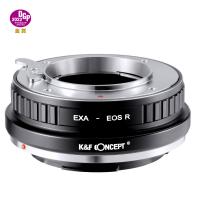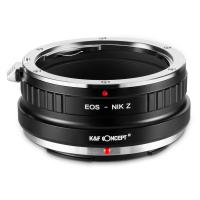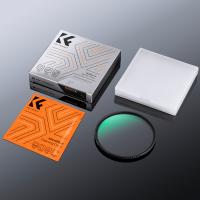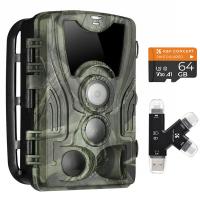What Battery Does The Blink Camera Use ?
The Blink camera uses two AA lithium batteries.
1、 Blink camera battery type and compatibility
The Blink camera uses a specific type of battery to power its operations. The battery type used by Blink cameras is the AA lithium batteries. These batteries are known for their long-lasting power and reliability, making them an ideal choice for wireless security cameras like Blink.
The compatibility of the Blink camera battery is quite versatile. It is designed to work with all models of Blink cameras, including the Blink Indoor, Blink Outdoor, and Blink Mini. This means that regardless of the specific model you own, you can use the same AA lithium batteries to power your Blink camera.
The use of AA lithium batteries in Blink cameras offers several advantages. Firstly, these batteries have a longer lifespan compared to traditional alkaline batteries. This means that you won't have to replace them as frequently, saving you both time and money in the long run. Additionally, AA lithium batteries perform better in extreme temperatures, making them suitable for outdoor use.
It is worth noting that while AA lithium batteries are the recommended choice for Blink cameras, some users have reported success using rechargeable AA batteries as well. However, it is important to ensure that the rechargeable batteries you use are compatible with the camera and provide sufficient power for its operations.
In conclusion, the Blink camera uses AA lithium batteries as its power source. These batteries are compatible with all models of Blink cameras and offer long-lasting power and reliability. While rechargeable batteries may be an alternative option, it is essential to ensure their compatibility and performance.

2、 Recommended battery options for Blink camera
The Blink camera is a popular choice for home security, offering wireless and easy-to-install surveillance. When it comes to the battery, the Blink camera uses two AA lithium batteries. These batteries are specifically recommended by Blink for optimal performance and longevity.
The choice of AA lithium batteries is deliberate, as they provide a longer lifespan compared to traditional alkaline batteries. This is especially important for security cameras that need to be constantly powered to ensure uninterrupted surveillance. AA lithium batteries can last up to two years, depending on usage and environmental factors.
It is worth noting that the Blink camera is designed to be energy-efficient, utilizing a low-power consumption mode when not actively recording or detecting motion. This helps to extend the battery life further, ensuring that the camera remains operational for an extended period.
In terms of recommended battery options, Blink suggests using reputable brands such as Energizer Ultimate Lithium or AmazonBasics Lithium batteries. These brands are known for their reliability and performance, providing consistent power to the Blink camera.
However, it is always a good idea to check the latest recommendations from Blink, as they may update their suggestions based on advancements in battery technology. Additionally, users can also explore rechargeable battery options, which can be a more cost-effective and environmentally friendly choice in the long run.
In conclusion, the Blink camera uses two AA lithium batteries, and Blink recommends using reputable brands such as Energizer Ultimate Lithium or AmazonBasics Lithium batteries for optimal performance. Keeping up with the latest recommendations from Blink and considering rechargeable battery options can help ensure that your Blink camera remains powered and operational for an extended period.

3、 Understanding the power requirements of Blink camera
Understanding the power requirements of Blink cameras is crucial for ensuring optimal performance and longevity. Blink cameras are known for their wireless design, which allows for easy installation and flexibility in camera placement. To power these cameras, Blink relies on a specific type of battery.
Blink cameras use two AA lithium batteries as their primary power source. These batteries are chosen for their long-lasting performance and ability to withstand various weather conditions. The use of AA lithium batteries ensures that Blink cameras can operate for an extended period without the need for frequent battery replacements.
The choice of AA lithium batteries also aligns with Blink's commitment to energy efficiency. Lithium batteries have a higher energy density compared to other battery types, allowing them to provide more power in a compact size. This not only reduces the overall size of the camera but also minimizes the environmental impact by requiring fewer batteries over time.
It is worth noting that Blink offers a range of camera models, and the power requirements may vary slightly between them. However, the use of AA lithium batteries remains consistent across the Blink camera lineup.
In recent years, there have been advancements in battery technology, such as rechargeable lithium-ion batteries. While these batteries offer the convenience of recharging, they may not be compatible with Blink cameras due to differences in voltage and form factor. Therefore, it is essential to use the recommended AA lithium batteries to ensure proper functioning of the Blink camera system.
In conclusion, Blink cameras utilize AA lithium batteries as their primary power source. These batteries provide long-lasting performance, energy efficiency, and compatibility with Blink's wireless design. It is important to adhere to the recommended battery type to ensure optimal performance and longevity of the Blink camera system.

4、 Pros and cons of different battery choices for Blink camera
What battery does the Blink camera use?
The Blink camera uses two AA lithium batteries. These batteries are specifically designed to provide long-lasting power to the camera, ensuring that it can operate for extended periods without needing frequent battery replacements. The use of AA lithium batteries also makes it convenient for users to find replacements, as they are widely available in stores.
Pros and cons of different battery choices for Blink camera:
1. AA Lithium Batteries:
- Pros: AA lithium batteries have a long shelf life and can provide consistent power to the camera. They are lightweight and easy to replace, making them convenient for users.
- Cons: AA lithium batteries can be more expensive compared to other battery options. Additionally, they are not rechargeable, so users will need to purchase new batteries when they run out.
2. Rechargeable AA Batteries:
- Pros: Rechargeable AA batteries can be a cost-effective option in the long run, as they can be reused multiple times. They are also more environmentally friendly, as they reduce the number of disposable batteries being thrown away.
- Cons: Rechargeable AA batteries may have a shorter lifespan compared to lithium batteries. Users will need to have spare batteries available while the others are charging.
3. AA Alkaline Batteries:
- Pros: AA alkaline batteries are widely available and relatively inexpensive. They can provide sufficient power to the Blink camera for a reasonable amount of time.
- Cons: Alkaline batteries have a shorter lifespan compared to lithium batteries, so users may need to replace them more frequently. They may also have inconsistent power output, which can affect the camera's performance.
It is important to note that the latest point of view on battery choices for Blink cameras may vary depending on individual preferences and advancements in battery technology. It is always recommended to refer to the manufacturer's guidelines and consider factors such as cost, convenience, and environmental impact when choosing the appropriate battery for your Blink camera.







































